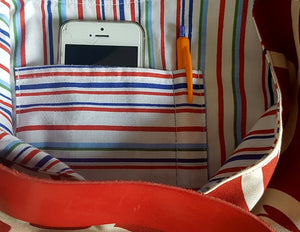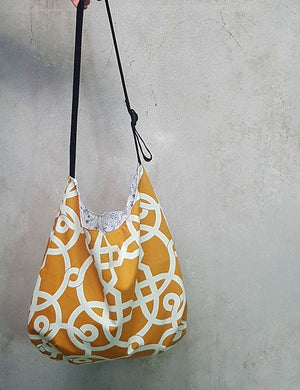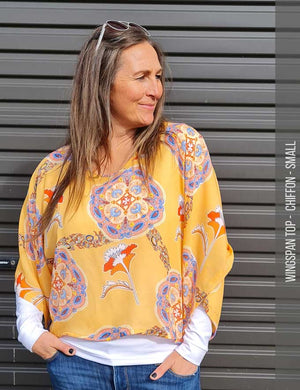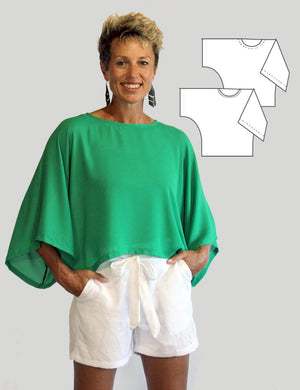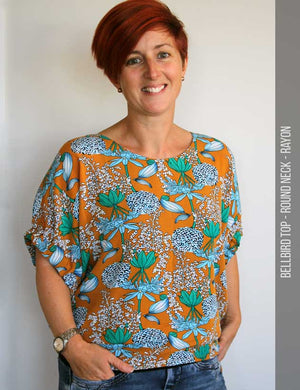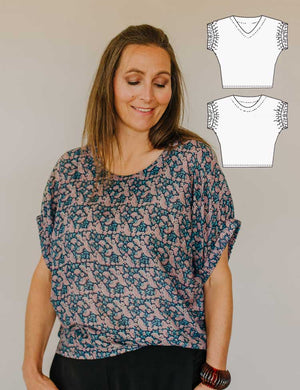There are many tutorials on the internet on sewing your own face mask - largely as a response to the Covid-19 pandemic we find ourselves in. Some go to huge lengths to describe the technical fabrics you should use and there are a range of patterns available for free. This blog tries to find a happy medium and show you how to make your own simple mask - using fabric you may already have on hand - and whilst it won't be surgical grade - it will most certainly provide added protection when you are out and about.
This method will also allow you to adjust the size so that it fits your different family members. There is also a link to a free pattern (small, medium and large) - to make it super easy - although I still recommend you follow these simple instructions to get the fit just right for the special people in your life.
YOU WILL NEED:
For one mask approximately:
- 30cm of high thread count cotton fabric (see notes below for alternatives)
- approx 40cm of 6mm wide elastic
- a sewing machine and thread (although you can still sew the mask by hand using "backstitching"). Refer link on how to backstitch at the end of this tutorial.
- Scissors
- Ruler
- Pattern (made up on a piece of card or paper) hand made for individual fit - instructions below - or one of our samples downloaded from the link at the end of this tutorial).

FABRIC:
Densely woven cotton is great because it breathes well. The looser the weave (the more see-through when you hold it up to the light, the less protection).
We will use 2 layers of this as backing for the mask and you may like to choose a nice print for the outer layer.
What you may find at home: If you are already in lock-down, you might need to have a dig around for fabric to use. A 100% cotton sheet (the higher the thread count the better) - you will find the corners of an old sheet will be less worn than the centre. 100% cotton is better than polyester as it breathes better - but if that's all you've got, it is better than nothing.
If your sheet or cotton base layer's have a good thread count, you might like to have a little fun with the outer layer - using a tea towel with an interesting print (again - consider the thread count/tighter weave for best protection)
ELASTIC (or alternative): we recommend 6mm (1/4 inch) but you can also use "hat elastic" (cord elastic) or knicker elastic (we don't recommend ripping up old underwear but some avid sewers may have this in their stash).
What you may find at home: if there is no elastic at hand, you may have old sneakers with cord elastic as shoe laces (old salomon running shoes are great for this). Alternatively, you can use a tie to secure your mask (using shoe laces, bias binding or other cord).

HOW TO CREATE YOUR OWN PATTERN:
- Measure yourself in a line running from the hollow of your cheek bone, around the front of your face over your upper lip (under your nose), around to the same point on the other cheek. We will call this measurement "A". For a small woman, my measure is 18cm.
-
Using a piece of card (or paper), mark out a square that is the width of measurement "A" (18cm in my example) and the height of measurement A minus 2cm - we'll call this measure "B" (16cm in my example -18cm-2cm). This will be the finished size of the mask (prior to creating the pleats). We will add seam allowances when we cut out the fabric.
- Cut out your pattern (and name it so you know whose size it is for future reference).
- On the short sides of your mask pattern (the vertical sides) - divide the full length in to 8 parts. The depth of my finished mask is 16cm, so divided by 8 = 2cm sections. Mark the 8 points on your pattern.
- If we refer to each mark as 1 to 7 from top to bottom, place an asterix (*) beside numbers 1 & 3 and numbers 5 & 7. These points will help us make our mask pleats later.

SEWING UP YOUR MASK
Whether you have made your own pattern or are using our downloaded patterns, are sewing with a machine or by hand, the following are the step-by-step instructions:
STEP 1: Lay out your fabric with 2 layers of backing fabric plus 1 layer of outer fabric on top of each other. Place the pattern on top and cut around it making sure you add 1cm seam allowance around the outside edge as shown below:

STEP 2:
(i) with the fabric RIGHT SIDES TOGETHER, pin and sew along the top and bottom seams using a 1cm seam allowance.
(ii) Now trim the 2 backing fabric layers to 3mm to remove the seam bulk.

STEP 3: TRY ON THE MASK TO MEASURE THE ELASTIC
(i) Transfer the markings from the pattern to the fabric. Use a maker pen or biro to mark points 1,3,5 & 7. These marks will not show when the mask is finished.
(ii) Create the pleats by pulling point 3 up to match point 1 & then point 5 down to meet point 7. Pin in place
Repeat both sides.

(iii) Measure the elastic from the end point on your cheek, around your ear and back to the side point on your face (be generous - it's easier to shorten it than lengthen it after cutting)- plus 2 cm (I used 18cm).
(iv) Now pin it to each side of the mask at the top and bottom. Try it for fit and adjust the length accordingly.

STEP 4:
(i) Unfold and unpin the elastic.
(ii) Still with right-sides-together, re-attach the elastic between the outer layer and the first back layer on each side at the top corners. Align the 1cm mark on the elastic with the seam. The elastic will loop between the layers. Pin in place on both sides.

(iii) Pin the un-sewn edges together and sew them with a 1cm seam allowance - remembering to LEAVE A GAP in one side to turn the mask out the right way. We suggest you leave a gap between points 3 and 5 (or 2 and 5 if you want it a little larger).
Reverse back over the elastic to make it doubly secure.

STEP 5: TURN THE MASK THE RIGHT WAY OUT
(i) Clip the corners to remove bulk and then turn the mask in the right way through the gap in the side.

(ii) Fold the raw edges of the gap to the inside and PRESS the mask flat. You may choose to sew the gap shut, but we will sew down this line to secure the pleats in place at step 5(vi) below.
(iii) Place your pattern back on top of the mask and mark the fold points with pins as shown.

(iv) Just as you did when you were testing the mask for size in step 3(ii) above, put points 1&3 together and 5&7 as marked to create your box pleat.
(v) Pin the pleat in place, check the folds at the back and PRESS.
(vi) Sew a seam all the way around the mask which top-stitches the top and bottom edges and sews the pleats in place at the sides.

Remove the pins.
Voila! You've done it.
USEFUL LINKS:
* Download the easy folded mask patterns in small/medium, medium/large adult or child.
TO PRINT you will need to open the files in Adobe Reader (you can get the the official free download right here).
Please follow instructions on printing here if this is your first time printing our PDF sewing patterns. You need to ensure your scale is set to 100%.
Page 1 - Small adult (18x16cm)
Page 2 - Child (15x13cm)
Page 3 - Med/Large adult (22x20cm)
* Sewing your mask by hand tutorial : How to backstitch

